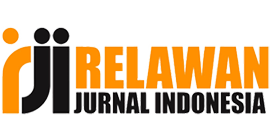ANALISIS KOMUNIKASI KONSUMEN TERHADAP FIDUSIA LEASING KENDARAAN PADA STUDI KASUS DEBT. COLLECTOR DENGAN FIDUCIARY VEHICLE SYSTEM METHODS
Abstract
Debt. collector with Fiduciary Vehicle System Method with the term FVSM. With FVSM analysis system with fiducative vehicle control method as vehicle payment system in leasing system, as the pattern of business trust balance and fiduciary function. So the system of vehicle control method as fiducative vehicle payment system for fiduciary system guarantee as applied scope of vehicle business leasing system. The recognition of the system by the method of vehicle control fiducative for guarantees to prevent conflicts in the pattern of fiducative vehicle balance to study the system is more safely controlled on the fiduciary system conducted by the community. It analogy system with controlling method and supervision of vehicles fiducative to restore business trust system on pattern of fiduciary system which gives ease. With the FVSM system is a process of studying business communication systems on the pattern of vehicle control methods fiducative for guarantees to prevents conflicts in the pattern of vehicle fiducative balance to learn the system is more secure controlled on the security system asset business environment.
References
Anna, N. E. V. (2015). Pengguna Web 2.0 Sebagai Media Promosi Perpustakaan Perguruan Tinggi di Indonesia. Record and Library Jurnal, 1(1), 77–82.
Fatma Paparang, Fakultas Hukum, & Manado, U. S. R. (2014). Implementasi Jaminan Fidusia Dalam Pemberian Kredit Di Indonesia. Jurnal LPPM Bidang EkoSosBudKum, 1(2), 56–70.
Hayatdian, H. D. (2013). Kajian Hukum Surat Kuasa Dibawah Tangan Sebagai Dasar Pembuatan Akta Jaminan Fidusia. Jurnal Hukum Unsrat, 1(1), 120–135. Retrieved from http://repo.unsrat.ac.id/373/1/KAJIAN_HUKUM_SURAT_KUASA_DIBAWAH_TANGAN_SEBAGAI_DASAR_PEMBUATAN_AKTA_JAMINAN_FIDUSIA.pdf
Jumaili, S. (2005). Kepercayaan Terhadap Teknologi Sistem Informasi Baru Dalam Evaluasi Kinerja Individual. Seminar Nasional Akuntansi VIII, (September), 15–16.
Karianga, A. (2017). Analisis Hak Konsumen Terhadap Perusahaan yang Dinyatakan Pailit Oleh Hakim Pengadilan Niaga. Lex Administratum, V(7), 109–115.
Lindrawati, & Surabaya, D. T. F. E. U. W. M. (2009). Sistem Informasi Akuntansi Berbasis Elektronik Data Prosesing. Sistem Informasi Akuntansi Berbasis Elektronik Data Prosesing, I(1), 27–34.
McQuail, D. (2013). Reflections on Paradigm Change in Communication Theory and Research University of Amsterdam. International Journal of Communication, 7, 216–229.
Mulyani, S. (2010). Rekontruksi Pemikiran Yuridis Integral Dalam Pembaharuan Sistem Hukum Jaminan Fidusia Berpilar Pancasila, ISSN : 0854-2031. Hukum Ekonomi Indonesia, 7(0854), 120–133.
Pawito. (2007). Media Komunitas dan Media Literacy. Article, 4(2), 167–177.
Sholihath, D. F. (2016). Pengaruh Sikap konsumen, Kewajaran Harga, dan Kepercayaan Terhadap Niat Konsumen untuk Berbelanja Online di Surabaya. Jurnal Agri, 1(1), 23–28.
Spiekermann-Hoff, S., Oetzel, M. C., Oetzel, M., & Spiekermann, S. (2017). A systematic methodology for privacy impact assessments: a design science approach. European Journal of Information Systems (EJIS), 23(2), 128–150. Retrieved from http://epub.wu.ac.at/5495/%0Ahttp://epub.wu.ac.at/
Stem, C., Margoluis, R., Salafsky, N., & Brown, M. (2005). Monitoring and evaluation in conservation: a review of trends and appraoches. Conservation Biology, 19(2), 295–309. https://doi.org/10.1111/j.1523-1739.2005.00594.x
Sudapet, I. N., Sukoco, A., & Setiawan, I. (2018). Jurnal Darussalam; Jurnal Pendidikan, Komunikasi dan Pemikiran Hukum Islam Vol. IX, No 1. September 2017. ISSN: 1978-4767, ISSN: 2549-4171. Jurnal Darussalam; Jurnal Pendidikan, Komunikasi Dan Pemikiran Hukum Islam, IX(1), 148–160.
Thorson, K., & Wells, C. (2015). Curated Flows : A Framework for Mapping Media Exposure in the Digital Age. Article, (c), 1–20. https://doi.org/10.1111/comt.12087
Verabel, P., Penggunaan, M., Dan, I., Akuntansi, S., Terhadap, M., Antara, H., … Indonesia, P. (2015). Jurnal fairness. In Jurnal Fairness (Vol. 5, pp. 1–138). Bengkulu.
Wibowo, A. (2006). Kajian Tentang Perilaku Pengguna Sistem Informasi dalam Pendekatan TAM. System Information. Retrieved from https://www.researchgate.net/publication/228997997_Kajian_Tentang_Perilaku_Pengguna_Sistem_Informasi_Dengan_Pendekatan_Technology_Acceptance_Model_TAM
Yodiansyah, Hefri, P. B. R. (2016). Literasi Perencanaan Komunikasi. Jurnal Academia.Edu, 0(42), 1–29.
Yodiansyah, H. (2016). Paradigma Teori Perencanaan Komunikasi Paradigma Media Literacy; Plan In The Action. Jurnal Academia.Edu, 0–0(42). Retrieved from www.academia.edu
Yos, F. D. (2009). Analisis Sistem Informasi Akuntansi Penjualan Tunai Untuk Meningkatkan Pengendalian Intern Pada PT. Gendish Mitra Kinarya. Jurnal Akuntansi, Fakultas Ekonomi Universitas Gunadarma, 1(18), 3–4. Retrieved from http://gunadarma.ac.id/library/articles/graduate/economy/2009/Artikel_21205531.pdf

This work is licensed under a Creative Commons Attribution-ShareAlike 4.0 International License.

















